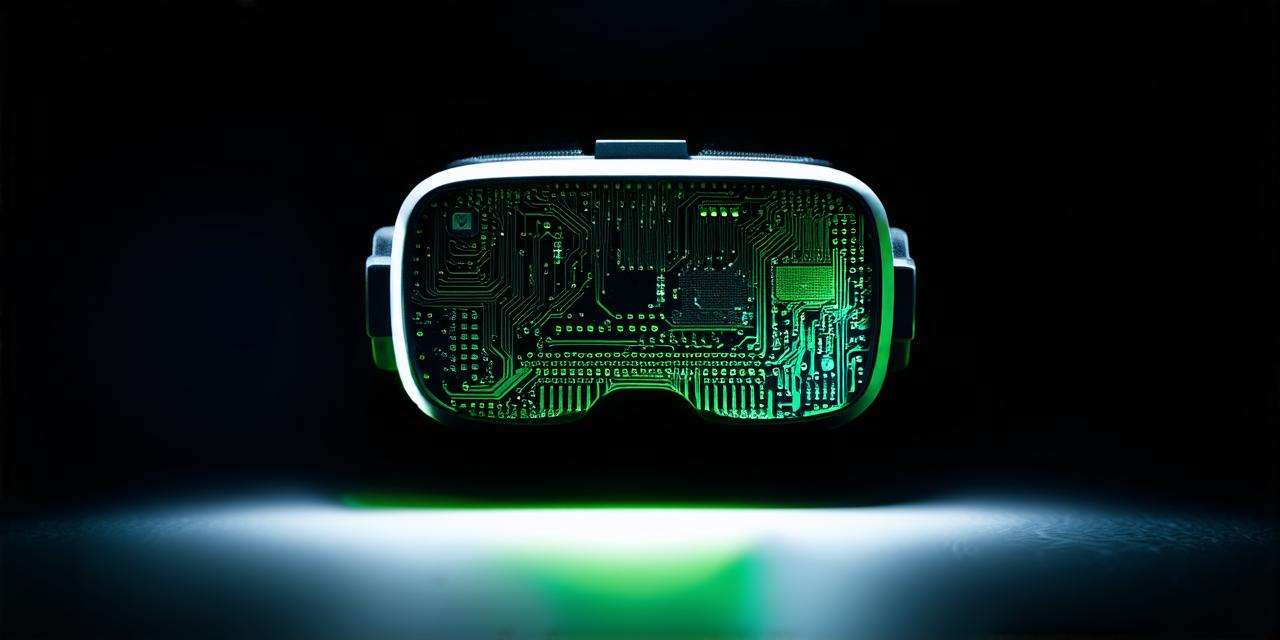Virtual Reality (VR) technology has revolutionized the way we interact with digital content, offering endless possibilities for gaming, education, healthcare, and more. However, creating a successful VR application requires careful planning and execution to ensure it meets the needs and preferences of the target audience.
1. Define Your Target Audience
The first step in VR development is to define your target audience. This includes understanding their age range, interests, and preferences. For example, if you are developing a gaming VR experience, you may want to target young adults aged 18-35 who enjoy action games. On the other hand, if you are creating an educational VR application, your target audience might be students in high school or college.
Once you have identified your target audience, you can tailor your development process to their needs and preferences. This includes designing the user interface (UI) and content to be engaging and intuitive for the target audience. It’s essential to conduct market research to understand the behavior, interests, and habits of your target audience to create a VR experience that resonates with them.
2. Choose the Right Hardware and Software
The hardware and software used in VR development can significantly impact the final product’s performance and user experience. For example, high-end graphics cards and processors are essential for creating realistic and immersive environments. Additionally, choosing the right software platform, such as Unity or Unreal Engine, can help streamline the development process and ensure compatibility with various VR devices.
It’s also important to consider the VR hardware requirements, including the display resolution, refresh rate, and field of view. The higher the display resolution and refresh rate, the more immersive the environment will be. Furthermore, selecting a VR device that supports eye-tracking technology can enhance the user experience by providing a more realistic interaction with the virtual world.
3. Optimize for Performance
VR applications require high performance to avoid motion sickness and provide a smooth user experience. This includes optimizing code for efficient rendering, minimizing frame rates, and reducing load times. It’s also important to test your application on different VR devices to ensure compatibility and identify any performance issues that may arise.
To achieve high performance, developers can use techniques such as level of detail (LOD) optimization, where low-resolution assets are used for distant objects, while high-resolution assets are used for close-up objects. This reduces the overall load on the system and enhances the user experience. Additionally, using multi-threading and parallel processing can help speed up the rendering process and reduce frame rates.
4. Use Realistic Sound Effects and Music
Sound effects and music are critical components of a VR experience as they help create an immersive environment. Using high-quality sound effects and music can enhance the user’s emotional response and increase their engagement with the application.
For example, in a medical VR training application, realistic surgical sounds can make the virtual environment more authentic and prepare the trainee for the real-life experience. Similarly, in a gaming VR experience, using high-quality sound effects and music can create a more immersive atmosphere and enhance the user’s emotional response to the game’s events.
5. Incorporate Interactive Elements
Interactive elements, such as puzzles and challenges, can make your VR application more engaging and encourage users to explore further. Additionally, incorporating social features, such as multiplayer modes and leaderboards, can foster a sense of community among users and increase their motivation to continue playing or learning.
For instance, in an educational VR application, interactive elements such as quizzes and puzzles can make the learning experience more engaging and enhance retention. Similarly, in a gaming VR experience, incorporating social features such as multiplayer modes and leaderboards can create a sense of competition and encourage users to play for longer periods.
6. Conduct User Testing and Feedback
User testing and feedback are crucial for improving the user experience and identifying areas for improvement. By conducting user testing and collecting feedback, you can identify any issues with the application’s usability, performance, or content and make necessary changes to improve the overall user experience.
User testing can be done by recruiting a group of users who fit your target audience and asking them to perform specific tasks in the VR application. This allows you to observe their interactions with the application and identify any issues that may arise. Additionally, collecting feedback through surveys or interviews can help you understand the user’s experience and identify areas for improvement.
7. Continuously Iterate and Improve
Finally, continuously iterating and improving is crucial for creating a successful VR application. This includes incorporating user feedback, refining the UI and content, and optimizing the application for performance.
Continuous iteration involves testing and refining the application regularly to ensure it meets the needs of the target audience. It also allows developers to identify any issues that may arise during development and make necessary changes to improve the overall user experience.
In conclusion, optimizing VR development for maximum results requires careful planning and execution. By defining your target audience, choosing the right hardware and software, optimizing for performance, incorporating interactive elements, conducting user testing and feedback, and continuously iterating and improving, you can create a VR experience that resonates with users and delivers maximum results.
